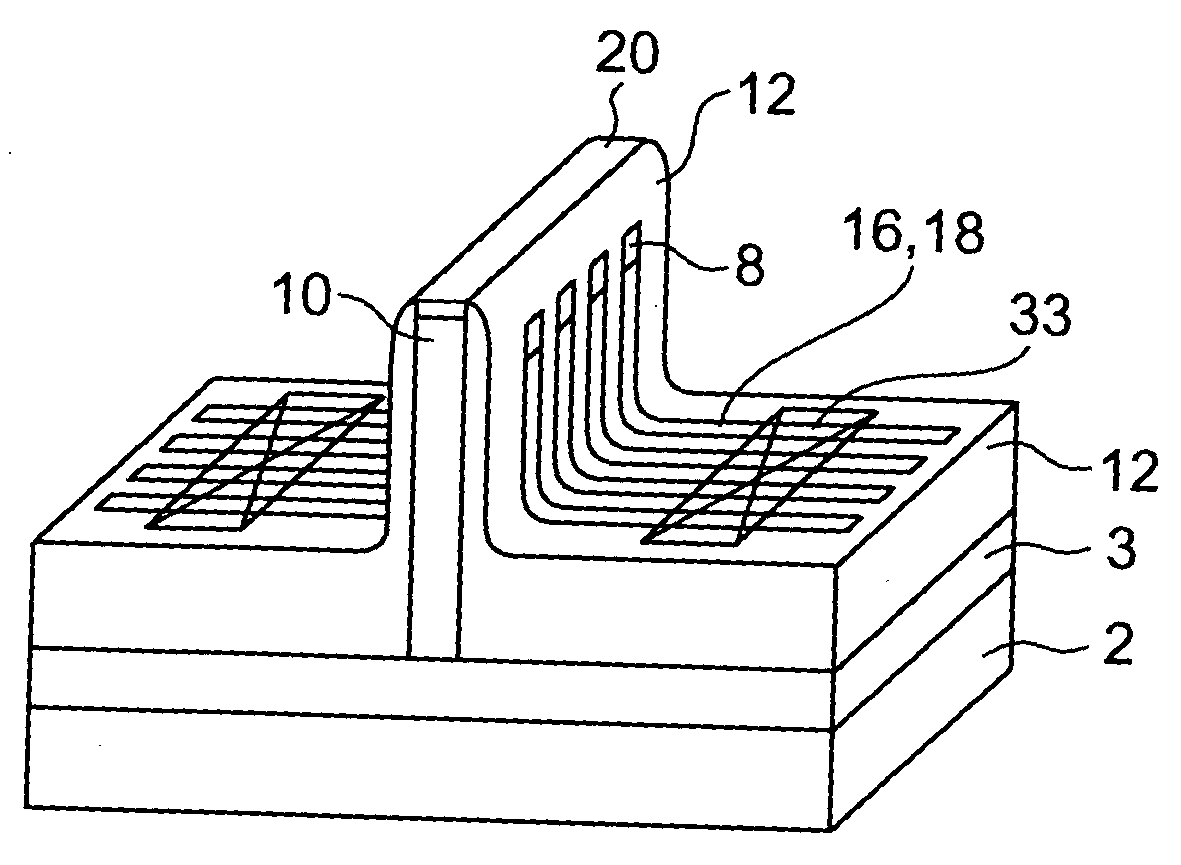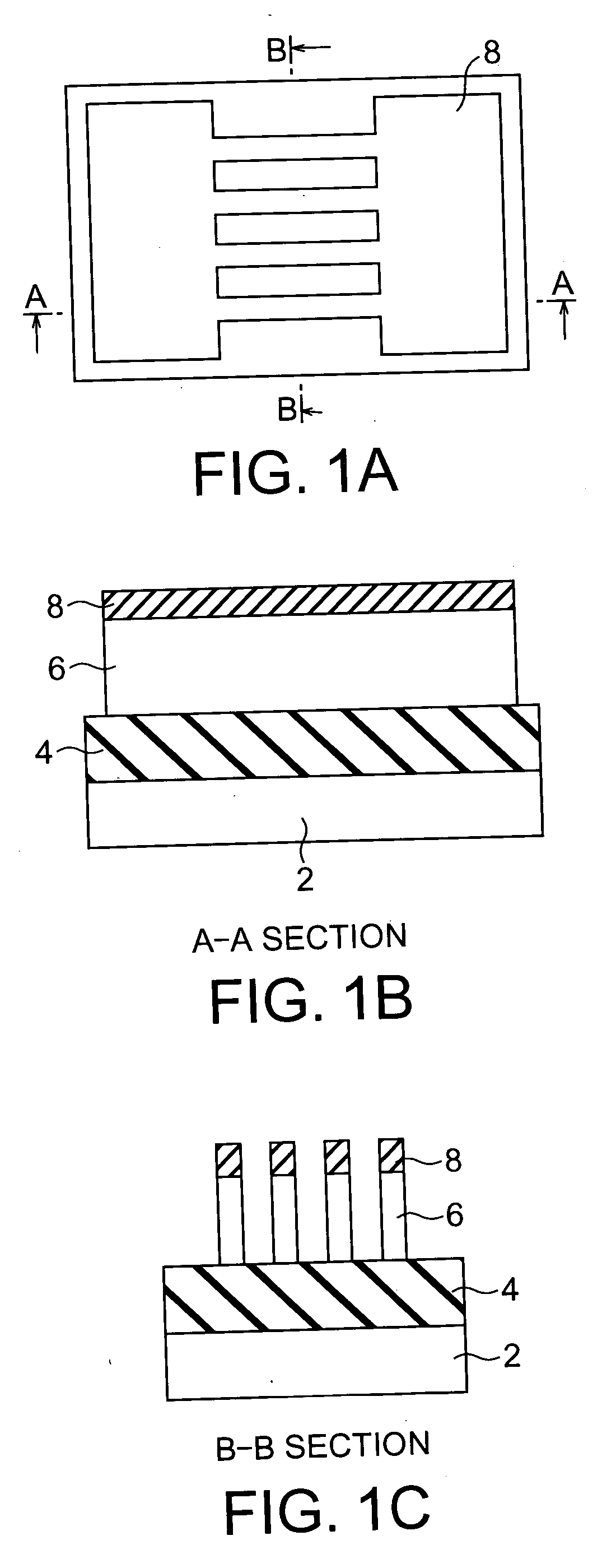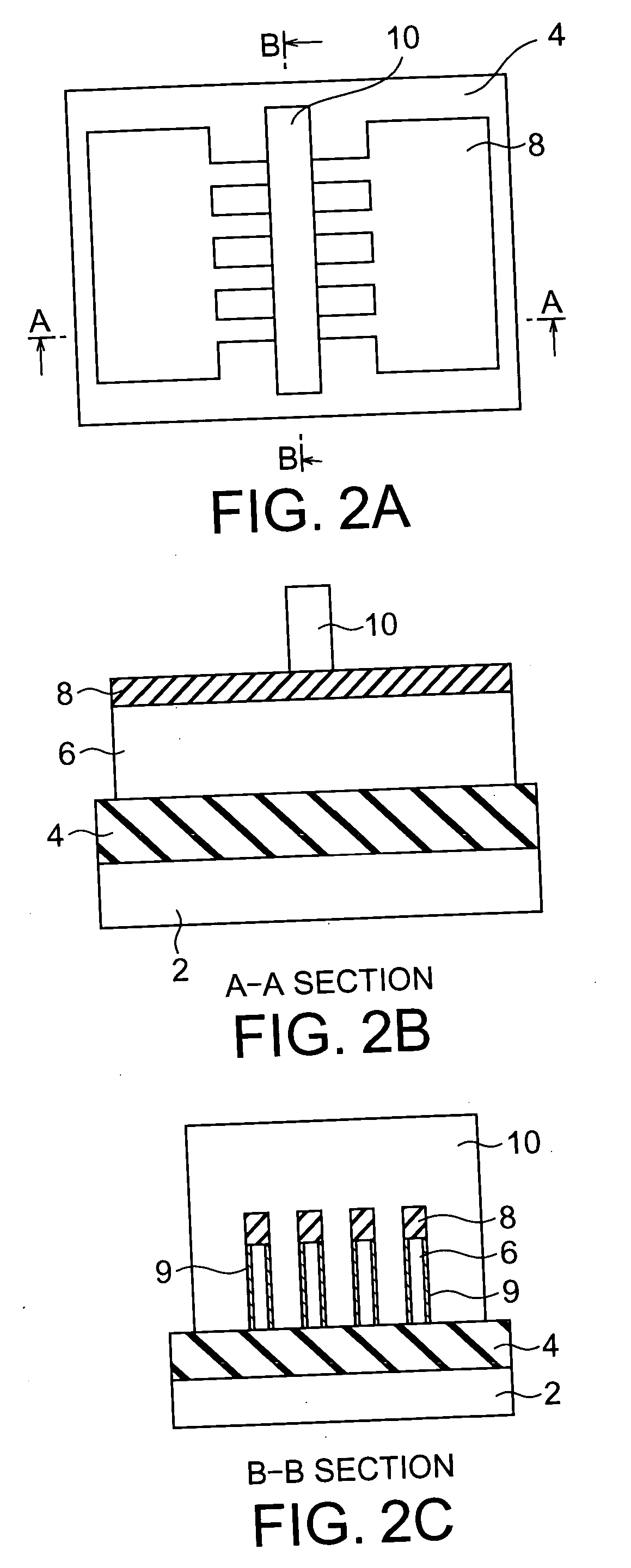Fin-type channel transistor and method of manufacturing the same
a transistor and channel technology, applied in transistors, semiconductor devices, electrical equipment, etc., can solve the problems of introducing impurities under, limiting this method, and reducing the effect of parasitic resistance,
- Summary
- Abstract
- Description
- Claims
- Application Information
AI Technical Summary
Benefits of technology
Problems solved by technology
Method used
Image
Examples
first embodiment
(First Embodiment)
[0101] Next, the structure of a Fin-type channel transistor according to a first embodiment of the present invention will be described with reference to FIGS. 1A to 7. Although an n-type channel device will be described as an example of a Fin-type channel transistor according to this embodiment, a p-type channel device can also be manufactured in a similar manner by changing the kind of ion species implanted.
[0102] First, as shown in FIGS. 1A, 1B, and 1C, an SOI substrate is prepared by forming an insulating film 4 on a support substrate 2 and an SOI layer 6 on the insulating film 4. Thereafter, a silicon nitride layer 8 having a thickness of about 100 nm and serving as a protection layer of channels is deposited by LPCVD (Low Pressure Chemical Vapor Deposition) or the like, and device isolation is performed using a known device isolation technique. Subsequently, the SOI layer 6 is patterned using a known patterning technique, thereby forming Fins serving as chann...
second embodiment
(Second Embodiment)
[0113] Next, FIGS. 8A to 10 show a structure of a Fin-type channel transistor according to a second embodiment of the present invention. FIG. 8A is a plan view of a Fin-type channel transistor according to this embodiment, FIG. 8B is a sectional view taken along line A-A of FIG. 8A, FIG. 8C is a sectional view taken along ling B-B of FIG. 8A, FIG. 9 is a sectional view taken along line C-C of FIG. 8A, and FIG. 10 is a perspective view of a Fin-type channel transistor according to this embodiment.
[0114] The Fin-type channel transistor according to this embodiment is formed on a bulk substrate, which differentiates the Fin-type channel transistor of this embodiment from the Fin-type channel transistor of the first embodiment formed on an SOI substrate. Although an n-type channel device will be described as an example of a Fin-type channel transistor of this embodiment, a p-type channel device can be manufactured in a similar manner.
[0115] A plurality of semiconduc...
third embodiment
(Third Embodiment)
[0122] Next, the structure of a Fin-type channel transistor according to a third embodiment of the present invention will be described with reference to FIGS. 11 and 12.
[0123] The Fin-type channel transistor of this embodiment is formed on a bulk silicon substrate, and includes an elevated source and drain layer 22 (FIG. 12). With such an elevated source and drain layer 22, the bottom area of the source and drain regions 16 can be decreased, thereby further decreasing the leakage current. Specifically, as shown in FIG. 11, the structure of this embodiment is similar to that of the second embodiment except for the existence of the source and drain regions 16 and the strip shape of the source and drain regions. After the state of FIG. 11, silicon epitaxial growth is performed to selectively cover the silicon-exposed portions 18 with the elevated silicon layer 22, as shown in FIG. 12. In FIG. 12, the elevated silicon layer 22 grows not only on the silicon-exposed por...
PUM
 Login to View More
Login to View More Abstract
Description
Claims
Application Information
 Login to View More
Login to View More - R&D
- Intellectual Property
- Life Sciences
- Materials
- Tech Scout
- Unparalleled Data Quality
- Higher Quality Content
- 60% Fewer Hallucinations
Browse by: Latest US Patents, China's latest patents, Technical Efficacy Thesaurus, Application Domain, Technology Topic, Popular Technical Reports.
© 2025 PatSnap. All rights reserved.Legal|Privacy policy|Modern Slavery Act Transparency Statement|Sitemap|About US| Contact US: help@patsnap.com



